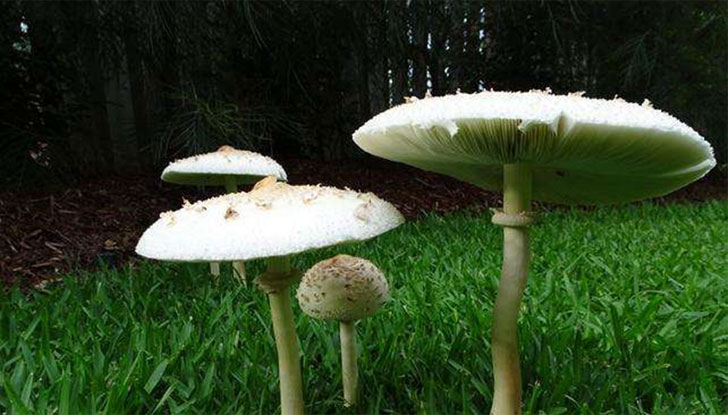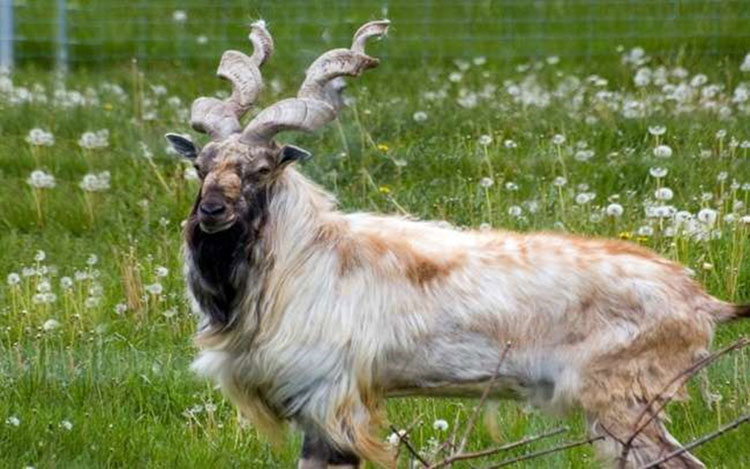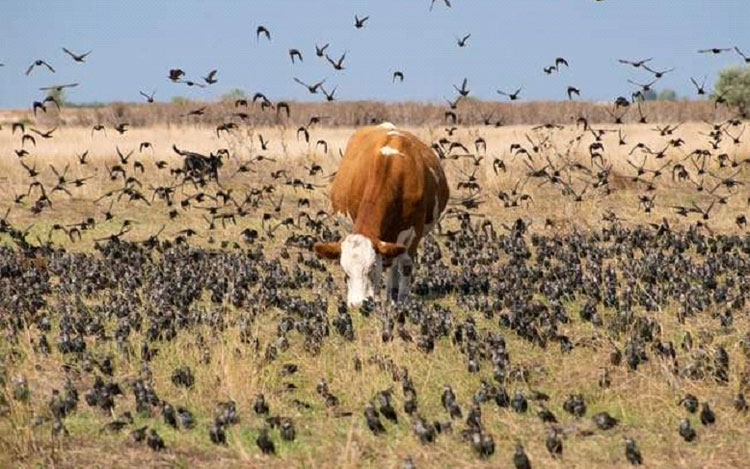Unit 1.3: Pasture Biodiversity and Ecology of Species
Instructor: Dr. Muhammad Khurshid
In this unit, you will study the biodiversity of pasture ecosystems, focusing on the species that inhabit these areas and their ecological roles. The unit covers the interaction between plant species, soil organisms, and grazing animals, emphasizing the importance of biodiversity in maintaining ecosystem stability and resilience. You will also learn about the threats to pasture biodiversity, such as overgrazing, invasive species, and habitat fragmentation, and the conservation strategies that can be implemented to protect these ecosystems.
1.3.1. What is Biodiversity?
“The Society for Range Management (2002) defines biodiversity as “the variety and variability of the world’s organisms, the ecological complexes in which they occur and the processes and life support services they mediate. [Biodiversity] is a complex phenomenon influenced by the kinds of organisms (i.e. plants, animals, microbes), their genetic variation, spatial distribution (e.g. ecosystem, landscape, regional, global), structural organization”.
There is no simple relationship between [biodiversity] and properties of ecological systems such as stability for all rangeland sites. Loss of biological diversity, however, may reduce future land use options and the ability to maintain sustainable systems” and resilience of rangelands to resist change or recover from extreme disturbance. Consequently, biodiversity is of fundamental importance to the maintenance of ecological function and thereby “directly provides for human wants and needs” (Society for Range Management, 2002).
Vegetation Composition, Structure and Functions
Herbivores impact rangeland vegetation through defoliation, physical trampling and other soil disturbances, and excretion. All herbivores are selective grazers, and show three types of selectivity:
- area selectivity
- species selectivity and
- Intra-species selectivity
Managed livestock grazing can have 4 general impacts on vegetation:
- alter the composition of the plant community,
- increase the productivity of selected species,
- increase the nutritive quality of the forage, and
- increase the diversity of the habitat by altering its [physical] structure
Intensity of defoliation varies among individual plants as a function of the unique combination of plants and herbivores present at any given time. As a result of non-uniform use of plants (site scale) and patches (patch, local, and landscape scales), grazing can increase the diversity of habitats for both plants and animals.
Linking Pastoralism and Biodiversity
Due to the close links between pastoral peoples, the ecosystems in which they live, and the animals that they breed, pastoralism has a significant role to play in the conservation and sustainable use of biodiversity at the genetic level, species level and ecosystem level:
- Genetic Level: Pastoralists often rely on locally adapted livestock breeds and crop varieties that are able to resist disease outbreaks, drought and other pressures, including climate change.
- Species Level: By retaining species and management practices that have evolved in parallel with the local environment, pastoralists retain important species interactions (e.g. herbivory, host-parasite, and nutrient cycling), which benefit many wild species of plants, birds and insects.
- Ecosystem Level: Many ecosystems have evolved as a result of interactions with grazers. For example, pastoralism maintains a patchwork of habitats including open areas, which are important for nesting birds. Furthermore, livestock are important contributors to food cycles.
i. Pastoralism makes an important contribution to livestock genetic diversity
Because pastoralism often takes place in areas such as drylands, locally adapted livestock breeds are critical for productivity. Such breeds tend to have higher resistance to disease, drought and parasites since they have evolved in parallel to such pressures. As such, despite being viewed as having limited productive potential, drylands maintain 46 percent of global livestock diversity.
ii. When practiced sustainably, pastoralism also encourages plant and landscape diversity
When pastoralism uses native livestock breeds and relies on mixed fodder types, a number of benefits are realized for plant and landscape diversity. Compared to large-scale enclosed grazing practices, pastoralism can be much closer to the grazing patterns of wildlife, thereby mimicking natural ecosystem interactions and functional roles.
1.3.2. Pasture Biodiversity
Biodiversity within a pasture includes many groups of species, not just plants and grazing livestock, these include Plants, mammals, fungi, bacteria, arthropods, Nematodes, and Birds:
- These three are the fundamental components which are closely interlinked and play a key role in maintaining pasture ecosystem stability and resilience.
- Rich biodiversity plays a central role in shaping a dynamic relationship, as diverse plant species support a variety of soil organisms, which in turn enhance soil health and nutrient cycling. This enriched soil fosters plant growth, providing a stable food source for grazing animals.
- Grazing animals, by their selective feeding, help regulate plant populations and promote species diversity, creating a balanced ecosystem. The interconnectedness of these components ensures that the ecosystem can withstand disturbances and adapt to changing conditions, preserving its long-term productivity and health.

Photo: Rich plants biodiversity in pastures (Credit: Muhammad Khurshid)

Photo: Having fungi in soil ensures healthy crops and pasture (Credit: Camille Smith)

Photo: Markhor (Capra Falconeri) grazing in pastures (Credit: Wikipedia)

Photo: Flock of birds in pastures (Credit: Wikipedia)

1.3.3. Major Threats to Pastures Biodiversity
| S.N. | Threats | Description |
| 1 | Overgrazing | Excessive grazing by livestock reduces plant diversity, alters plant community composition, and can lead to soil compaction and erosion, ultimately degrading the pasture ecosystem. |
| 2 | Land use changes | Conversion of pastures into agricultural land, urban areas, or industrial sites leads to habitat loss and fragmentation, severely impacting biodiversity. |
| 3 | Encroachment of invasive species | Non-native plants and animals can outcompete indigenous species, leading to a decline in native biodiversity and altering the structure and function of pasture ecosystems. |
| 4 | Climate change | Changes in temperature, precipitation patterns, and extreme weather events can affect plant growth, alter species distribution, and lead to the loss of species adapted to specific climate conditions. |
| 5 | Deforestation and Land Degradation | Traditional pastoral practices, which often maintained a balance between grazing pressure and biodiversity, are being abandoned in favor of more intensive land-use practices, leading to a decline in biodiversity. |
| 6 | Habitat Fragmentation | The division of large continuous pasture areas into smaller, isolated patches reduces habitat availability and connectivity, making it difficult for species to survive and migrate. |
Students’ Task
Enlist compelling reasons of overgrazing and how it degrades pastures’ biodiversity. Use Forum P-001.
Answers/Feedback by Students:
M1 Responses Students3
Videos on pastoralism maintaining biodiversity
References Cited:
Derner, J.D., Lauenroth, W.K., Stapp, P. and Augustine, D.J., 2009. Livestock as ecosystem
engineers for grassland bird habitat in the western Great Plains of North America. Rangeland Ecology & Management, 62(2), pp.111-118. http://dx.doi.org/10.2111/08-008.1
Rook, A.J. and Tallowin, J.R., 2003. Grazing and pasture management for biodiversity
benefit. Animal Research, 52(2), pp.181-189. https://hal.science/hal-00889966v1/document
Rosenthal, G., Schrautzer, J. and Eichberg, C., 2012. Low-intensity grazing with domestic
herbivores: A tool for maintaining and restoring plant diversity in temperate Europe. https://www.researchgate.net/publication/265698388_Low-intensity_grazing_with_domestic_herbivores_A_tool_for_maintaining_and_restoring_plant_diversity_in_temperate_Europe
Society for Range Management. 2002. Policy statements, position statements and
resolutions. Available at: https://shorturl.at/clhLf
Further Reading Material:
Christopher D. Allison and Louis C. Bender (2017). Grazing and Biodiversity.
Hogan, C. (2010). Pastoralism, nature conservation and development. In Convention on
Biological Diversity, Montreal, Canada. https://www.cbd.int/development/doc/cbd-good-practice-guide-pastoralism-booklet-web-en.pdf
Redecker, B., Härdtle, W., Finck, P., Riecken, U., & Schröder, E. (Eds.) (2002). Pasture
landscapes and nature conservation. Springer Science & Business Media. https://link.springer.com/book/10.1007/978-3-642-55953-2






